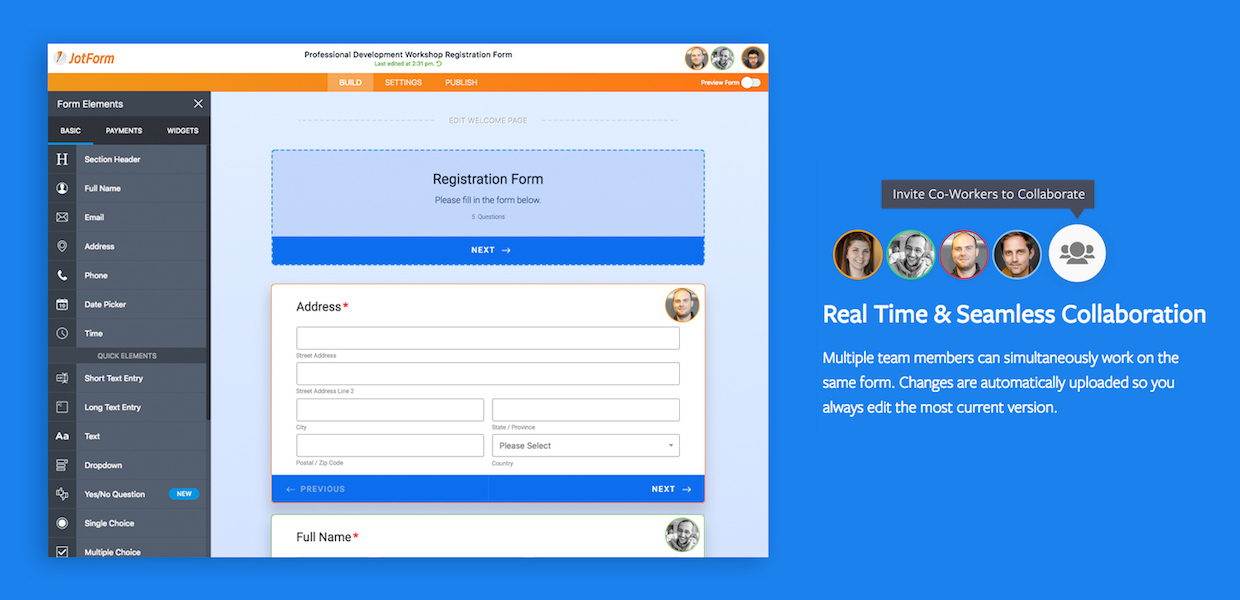1,386 words ~ 5 min read
Early-stage traction for your startup

How to land your first 1,000 users
This is the moment you’ve dreamed about. Your product is finished. Beta testers are happy and it’s ready for release.
All those eager users you imagined aren’t showing up. Now what?
When I launched Jotform in 2006, the internet was admittedly a different place. There was more elbow room. It was easier to stand out.
But, the tactics I used to grow our user base still apply.
In fact, they’re even more important now. And whether you’re a solo founder or the head of a small team, you can tackle these steps on your own.
You don’t need deep pockets or VC money to get early-stage traction for your startup.
Let’s dive in.
1. Always offer a free version
Even if you’ve built a SaaS product, a free version is your best marketing tool. It lowers the barrier to entry, so cautious users can try it out before they buy.
Give everyone the chance to get in there and play.
If someone is curious about your product, there’s also a good chance they’ll become a paying customer.
Treat these people well. Don’t make them sign up for complicated accounts or provide pages of personal information. Minimize friction whenever possible.
Happy users also tell their friends. When you provide real value, people are more likely to talk about your work, link to the product, and generally spread the word.
2. Build an audience
This strategy has helped me attract over 5 million monthly readers across my blog, Twitter account, and many other channels including my regular columns on Entrepreneur or Fast Company.
Most people know why they need an audience, but lots of early-stage entrepreneurs don’t follow through and actually do it.
I understand. This step takes time — and it means that you have to put yourself “out there,” to an online world that’s flooded with content and trolls who are busy sharpening their knives.
You still need to do it.
Take a deep breath and dial down the pressure. Pick the platform that feels most natural.
If you like to write, start a blog. If you’re comfortable speaking to a camera, create a YouTube channel. You can also podcast, post articles (good idea, right?), or start an online group.
Share authentically and be yourself. Produce content that reflects your real interest or expertise, and don’t worry about selling. Just be helpful.

In an ideal world, you started building this audience at least six months before your launch date. If that’s not possible, start now.
I was lucky to experience the Golden Age of blogging. Back in 2005, everyone still linked to each other’s work. Blogs encouraged real conversations between peers. I wrote mostly about new technologies, so when I released Jotform, it was natural to share it on my blog — and those early posts attracted new users.
While the Golden Age of blogging may have passed, there are still so many smart ways to grow your audience. Choose what makes sense for you and provide clear, engaging and valuable content.
3. Leverage your technology to get press coverage
You care deeply about your product. You’ve spent endless days building something awesome. Give yourself a high five for that accomplishment.
Trust me, though, when I say that your product release isn’t news. That’s not how media coverage works. You need a unique angle.
Back in 2006, I was struggling to talk about web forms. After all, it’s not exactly a thrilling topic for most people. So, I chose to focus on the technology.
These were the early days of AJAX and single-page web apps, like Gmail. Jotform used both of these technologies, so that’s how I framed my posts and press releases.
I positioned my product as a showcase of single page web applications that could send and retrieve asynchronous server data without affecting the display page, and do things like drag and drop on the browser.
Clearly, that’s not going to raise eyebrows now, but it was big news at the time. Jotform wasn’t the focus, but an example of what technology had made possible.
That angle helped me to get lots of great coverage on blogs and tech sites.
The best part about technology? It’s always evolving.
So, if you’re working with AI, big data, machine learning, video or anything that’s new and fresh, talk about the technology behind your product.
People always want to know how these tools are being applied — and it positions you as an expert source for reporters.
4. Participate in groups and forums
Building a business can be isolating. We all know the long days and late nights (and the empty pizza boxes). Online forums allow people to explore niche subjects while belonging to a like-minded community.
Forums have changed in the last 10–15 years, but they’re still super valuable. In fact, from Reddit to Hacker News to StackOverflow, there are more communities than ever before.
Join the groups that reflect your interests. You already know not to get sales-y or to name-drop your work, but it’s worth repeating. Contribute to the discussions. Offer your opinion when people ask for it.

Then, once you’re a trusted community member, you can mention your product. Ask for feedback and really listen to what you hear.
Don’t be afraid to ask questions or request clarification — unless it’s an irrelevant comment from a knife-wielding troll. Ignore those and carry on.
5. Don’t forget about SEO
Whew. This is a tough one. SEO gets more complicated all the time. It takes an expert to untangle all the fine details.
Still, SEO matters. It helped me and it can grow your customer base, too.
First, make sure your site is search engine-friendly. Basic stuff.
Next, keep in mind that Google won’t trust your website if it doesn’t have a history.
Remember that content you’re creating? Put it right on your product site or business homepage. This deepens your track record and can bring more eyes to your work.
Bounce rates also affect your Google ranking. If people find your site and then run for the exit, that’s not good. You can’t change visitor behavior, but you can encourage online loitering.
Ensure your graphics and copy are clear. Get right to the point. Let people try your product without providing a full DNA sample.
Most importantly, don’t worry about optimizing every little detail. Focus on creating valuable content and a killer product. Over time, people will start linking to you. They’ll linger for a while and boost your ratings.
If you want to go deeper, hire an SEO expert — but never at the expense of building a product that serves and delights your users.
6. Make it shareable
Think about products like Dropbox. You receive a link from a friend or colleague. You need the file, so you open the link. Now you’re a Dropbox user.
Shareable products are inherently poised to go viral. Yet, any product can encourage two-way data flows, which are invaluable when you’re new on the scene.
For example, the new version of Jotform enables collaboration. Users can create a form, then share it with a manager or business partner, who can make changes even if they don’t have an account with us.

Not only are they using our product, they’re learning how to use it.
It took us years to build this feature, but you can develop your version now. There are so many ways to make your work shareable — from text reviews to swapping the results of a tracking app.
Get creative and build it in from the start.
7. Collect those emails
Use your content or free product version to build your email database. This technique isn’t new, but it’s still one of the most effective ways to get traction.
There’s a reason why email marketing is also known as permission-based marketing. People have asked you to send them updates. Don’t take that relationship lightly.
Send regular emails that provide real value. You can tell them what’s new, but keep the selling to a minimum.
When we launched the paid version of Jotform in 2007, our first sign-ups came from email subscribers. I know, because I watched them roll in (while biting my nails to shreds) .
We didn’t have any press yet, but 10 minutes after we sent the launch email, a university in Spain made the first purchase. Then two customers from the U.K. By the end of the year, we had 500 paying customers. Not bad at all.
Here’s what else I’ve learned about email: it’s not easy to get people to join, but they convert extremely well.
Be patient if your list grows slowly. It’s always worth the effort.